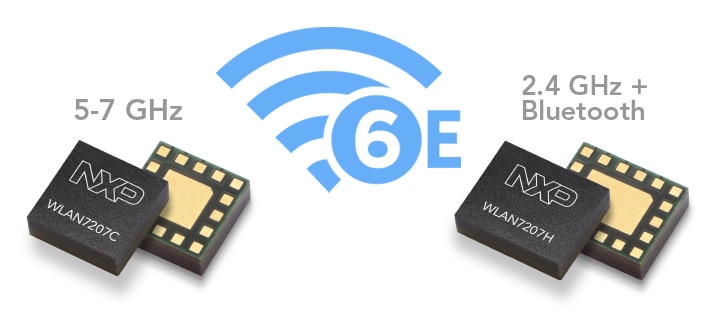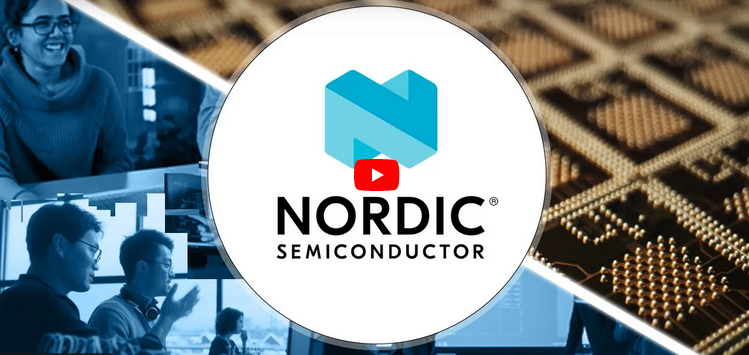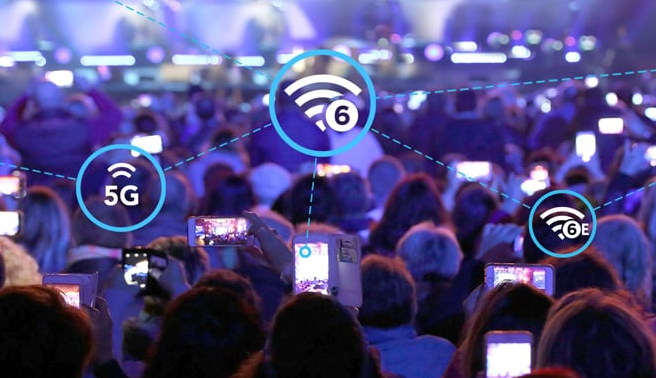The numbers for 2021 are in, and there’s no doubt about the role Wi-Fi plays in modern life
Wi-Fi 6/6E is Transformative Technology
It’s easy enough to understand why Wi-Fi 6 is taking off. Increased overall performance – with faster top speeds and better management of dense, crowded networks – plus the availability of new spectrum is a powerful combination. It means familiar experiences like video streaming and gaming get a boost, and a new generation of impressive applications, requiring high bandwidth and low latency, are now within reach.
The deployment of 5G cellular is another factor in Wi-Fi 6 growth. Wi-Fi 6 and 5G are complementary technologies and use many of the same techniques, including OFDMA and MU-MIMO transmission. When 5G mobile devices move indoors, where 5G signals may not be as strong, they can switch to Wi-Fi 6 without interrupting the workflow. That’s an essential feature for many of the most ambitious 5G applications – like autonomous vehicles, healthcare monitoring, smart manufacturing – which need uninterrupted connectivity, indoors and out, for seamless operation. The Wi-Fi Alliance reports that 63% of mobile traffic was offloaded to Wi-Fi in 2021, indicating that nearly two thirds of cellular sessions take advantage of Wi-Fi hotspots to keep mobile devices connected. As 5G continues its rollout, that number will only go up.
Wi-Fi 6/6E is More Challenging for Designers
From a design standpoint, increased capability comes at the price of increased complexity, and upgrading from Wi-Fi 5 to Wi-Fi 6 can be a hard transition for any engineer. The MU-MIMO feature, for example, gets an upgrade in Wi-Fi 6, moving from unidirectional operation to bidirectional, so designers have to deal with the uplink as well as the downlink capabilities. Similarly, where Wi-Fi 5 employs single-user orthogonal frequency division (OFDM), Wi-Fi 6 upgrades it to a multi-user format (OFDMA), which can be trickier to manage efficiently.
For designers of mobile systems, though, the biggest challenge is likely to be the upgrade to higher-order quadrature amplitude modulation (QAM) and bandwidth. Moving from the 256 QAM of Wi-Fi 5 to the 1024 QAM of Wi-Fi 6 translates to better throughput, and up to 25% higher capacity, with ten bits per symbol instead of eight. Combined with the move from 80 MHz maximum channel bandwidth to 160 MHz and the extension of the band up to 7.125 GHz, this demands much higher performance from the RF portion of the system. Getting the right level of performance can require a high degree of technical expertise.
 Wi-Fi 6 wireless high-speed internet connection
Wi-Fi 6 wireless high-speed internet connection
RF optimization is a notoriously difficult task under the best of circumstances, but the more rigorous requirements of Wi-Fi 6 make optimization all the more challenging. The tolerances are much tighter, so even tiny adjustments can significantly alter the Wi-Fi signal, performance, and power efficiency of the total line-up.
To avoid getting bogged down by the intricacies of RF optimization, design teams save time and effort by using pre-integrated RF products, called front-end modules (FEMs). FEMs are purpose-built solutions that complete the RF chain. Placed between the antenna and the connectivity System-on-Chip (SoC) of the wireless system, the FEM is a purpose-built solution that completes the RF chain and boosts its overall performance. In premium mobile Wi-Fi 6/6E systems, it’s one of the most important parts of the design.
Benefits of a FEM
FEMs save time while enabling a better design. Everything is supplied in one small, highly integrated solution, so design-in is faster. The placement flexibility of the single FEM parts means that every section of the RF chain can be fully optimized. The integrated RF amplifiers boost weak incoming signals without significant impact to noise performance, so the RF chain is more sensitive and better able to select from multiple input signals. On the transmit (TX) side, NXP FEMs boost the power levels of the signals that are being transmitted in a highly efficient manner, so that also in the uplink the performance is significantly improved and the transmission range is extended.
 Group of students experiencing Wi-Fi 6/6E on portable devices
Group of students experiencing Wi-Fi 6/6E on portable devices
First to Move from Dual to Single FEMs
The first FEMs for Wi-Fi 6/6E, including those offered by NXP, were dual FEMs. Each FEM was equipped with two monolithic front-end ICs. Our WLAN8101x family, for example, introduced in mid-2020, put two front-end ICs into a single QFN package that measured 3 x 4 mm.
RF designs don’t stand still for long, though, and our engineers are always working to top their own achievements. Just eight months after the WLAN8101x family became available, we broke new ground by being first with a single Wi-Fi 6E FEM. The WLAN7205C, designed for use in smartphones, was the industry’s first single-channel Wi-Fi 6 solution to offer a monolithic integrated power amplifier (PA), switch, and low noise amplifier (LNA) in a 2 x 2 mm QFN package.
First to market with single-channel Wi-Fi 6E front-end modules. Learn more about the WLAN Front-End ICs and Modules.
Compared to the dual-IC WLAN8101x, which requires a bigger package, the single-IC WLAN7205C can be placed even closer to the antenna. That reduces post-FEM trace losses and improves performance. Low post-PA losses deliver the best possible Tx efficiency, and low pre-LNA losses maximize the Rx sensitivity. Closer placement to the antenna also improves range, increases battery life, and enables faster data transmission.
Another NXP First
Now, NXP is taking single FEMs to the next level, with the WLAN7207C (5-7 GHz) and WLAN7207H (2.4 GHz and Bluetooth). Optimized for use in the latest smartphones, these fully integrated FEMs offer exceptionally high linearity and support low-power modes. They require no external matching components, for a design that is more compact, more cost-effective, and easier to finalize. They offer three Tx operating modes per band, enabling better fine-tuning of power efficiency, and two Rx operating modes, enabling a gain step between LNA mode and bypass mode. Best of all, they use tiny packages. The WLAN7207C is housed in a 2 x 2 mm HWFLGA16 package, while the WLAN7207H is in an HFCPLGA18 package that measures just 2.4 x 2.0 mm.
Like our other Wi-Fi FEMs, the WLAN7207x series is produced in our industry leading QUBiC SiGe:C BiCMOS technology, works very efficiently and helps to ensure Wi-Fi signals experience only minimal degradation in terms of noise, distortion, and spurious signals.
 Enhance Wi-Fi 6/6E performance using our WLAN7207C and WLAN7207H products in mobile applications
Enhance Wi-Fi 6/6E performance using our WLAN7207C and WLAN7207H products in mobile applicationsBetter Smartphone Experiences
Smartphones that integrate the WLAN7207x series will improve Wi-Fi performance with little effect on battery life. Signals remain linear and easy to manage, for higher data rates and longer range. That translates into a more consistent experience, since activities like video calls, made on the go, will benefit from a more reliable connection. At the same time, the high efficiency of the RF chain means that this performance improvement is achieved with little impact to battery life.
Looking Ahead to Wi-Fi 7
The WLAN7207x series reflects the latest capabilities of high-performance RF design, but it also prepares developers for what’s next. The IEEE is already working on Wi-Fi 7 (802.11be), and the Wi-Fi Alliance predicts Wi-Fi 7 will begin availability as early as 2023. Wi-Fi 7 is expected to build further on the successes of Wi-Fi 6 and Wi-Fi 6E, using all three bands in even more advanced ways (2.4/5/6 GHz). Therefore, the WLAN7207 series, with its Wi-Fi 6/6E support, is a natural bridge for designs that will, soon enough, transition to Wi-Fi 7.
Related Articles

Leveraging UWB and BLE in Manufacturing Environments
Manufacturing processes are being revolutionized by pin-point tracking and monitoring, leading to optimized workflows and enhanced safety protocols within the factory environment Manufacturers are always on the lookout for innovative solutions to transform their...

STMicroelectronics highlights deployment-ready smart grid and cellular IoT connectivity innovations
Newly certified smart grid chipset and operator-approved devices for connecting to cellular IoT services STMicroelectronics showcased advancements in multi-utility and smart infrastructure digitalization for sustainability during Enlit Europe, including its newly...

Nordic Semiconductor celebrates its 40th anniversary
Nordic Semiconductor has come a long way from its humble beginnings as a small, specialist supplier of ASIC design services in the Nordic region Nordic Semiconductor announces that this year the company reached its 40th anniversary milestone since its founding in...
Stay Up to Date With The Latest News & Updates
Our Sponsors
Incisor.TV partners with leading organisations in the technology sector.
Follow Us
And stay up to date with our news! We are active across the key social media platforms – please do follow us!





0 Comments